<>Blanc-Labo S.A. your laboratory equipment specialist
WALK-IN Climate rooms with light
You can configure your WALK-IN room on this link ->
BLANC-LABO offers a very complete range of WALK-IN climatic chambers for durability tests, standardized or not, or for studying crops (or growth chambers also called phytotrons);
The culture chambers are made to measure (to specifications) by 3 different manufacturers, depending on the complexity required and the planned investment. For the most specific needs, we offer equipment made by Bronson in Holland, or Rumed in Germany. For everyday needs and lower budgets, the rooms are made by Equitec in Spain. They are all maintained by our technicians.
This equipment is suitable for research in the field of plant growth of all kinds, including cannabis, mushrooms, germination, vernalization, thanks to very precise control of key climatic parameters. They are also used for standardized stability tests (ICH)
Share
The range
| Model | Test type | Technical sheet | Price | Cart |
|---|---|---|---|---|
| Plants growing | Optimize plant growing |
|
|
|
| Pathology | Test the influence of pathogens (versions S2, S3 optional) |
|
|
|
| Algae | Accelerate and/or study algae growth |
|
|
|
| In Vitro | Culture in-vitro |
|
|
|
| Germination | Germination of all types of plants |
|
|
|
| Breeding of small animals | insects (drosophila, ants), rodents, fish, amphibians, invertebrates.... |
|
|
|
Plants growing
Test type
Technical sheet
Pathology
Test type
Technical sheet
Algae
Test type
Technical sheet
In Vitro
Test type
Technical sheet
Germination
Test type
Technical sheet
Breeding of small animals
Test type
Technical sheet
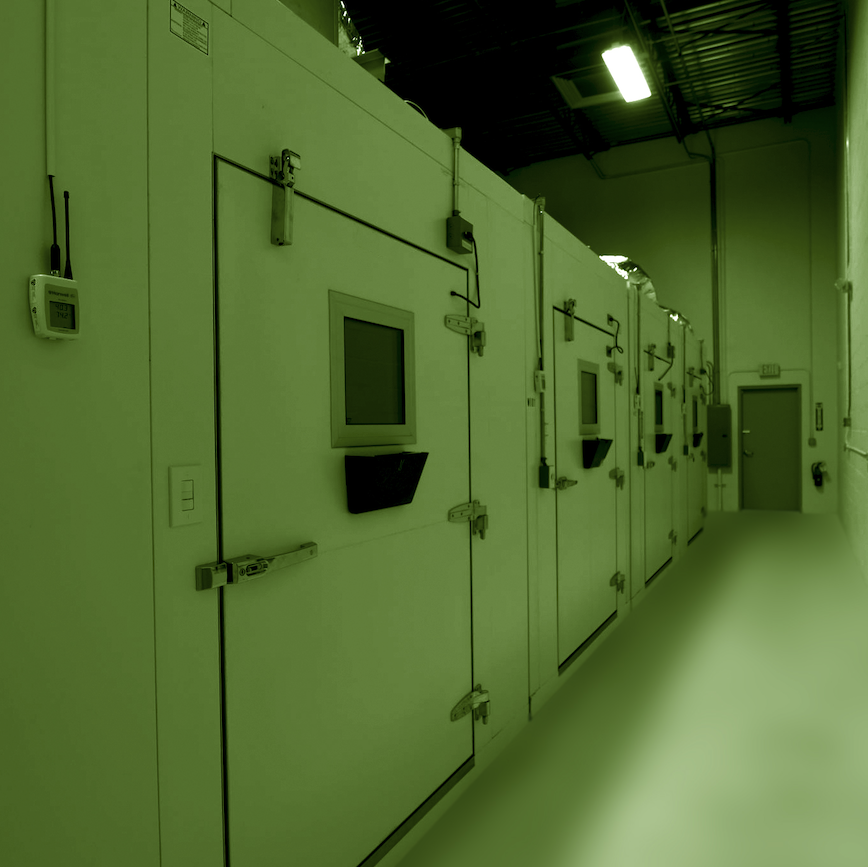
Tailor-made climate rooms
Factory tested and validated
Then assembled on site by our teams
Maintenance and remote maintenance service
Great choice for lighting, especially for algae
Several automatic watering systems
High stability for ICH tests, and insects
Very wide temperature and humidity ranges on request
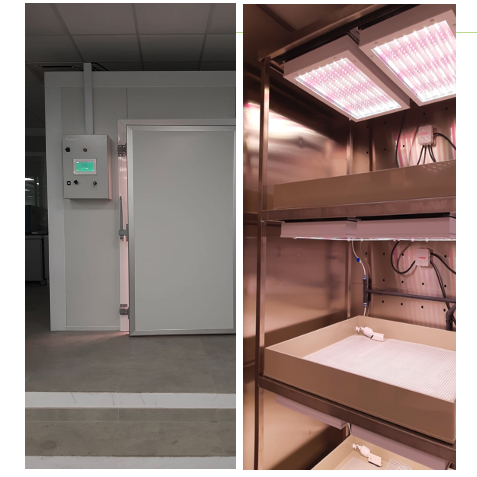
Outside the room. And special custom lighting system.
15m2 walk-in climatic chamber on the ground for the growth of tropical plants
The chamber is equipped to accommodate 80 trays with 50 cells each measuring 4x4x4 cm
There are 12 shelves
Temperature range: 25°C +/-5°C
Humidity: 30 to 80%RH
Lights on the top, by white LEDs, with 40 micromoles/s/m2
Watering: mist in the morning and tropical rain in the afternoon on all plants
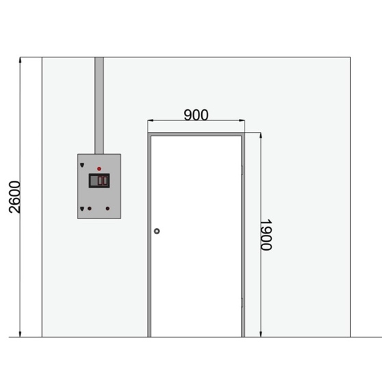
Vue de face
Room details
External dimensions: Lx Dx H mm: 4740 x 6960 x 2600
Internal dimensions: Lx Dx H mm: 4440 x 6400 x 2200
Net volume: 60 m3
Net room area: 27.28 m2
Useful surface area of shelves: 15.36 m2
Temperature range: 10 to 40°C
Homogeneity: +/- 2°C at 20-30°C
Stability: +/- 1°C at 20-30°C
Measurement accuracy: +/-0.1°C
Humidity Range: 30-90% RH
Homogeneity: +/- 5% RH at 20°C
Stability: +/- 3% RH at 20°C
Measurement accuracy: +/-1°% RH at 20°C
Indoor airflow: Horizontal at every height in the room
Necessary utilities:
Electricity: 380-400V, 50Hz, 30A
City water :
Waste :
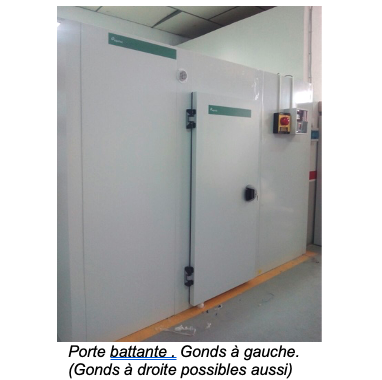
Swing door (sliding optional)
The enclosure door is equipped with an aluminum safety handle on the inside.
It has standard dimensions of L900 x 1900 mm

Interior and exterior walls
The envelope of the room is made up of modular insulated panels, assembled with a system of hooks invisible from the inside.
Characteristics of insulating panels:
Non-flammable material according to EN 13501-1.
Insulation: 60 mm of high density PU injected without CFC or HCFC
Density: 40Kg/m3
Thermal conductivity coefficient: 0.016 Kcal/m2.h °C
Thermal transmission coefficient: 0.160 Kcal/m2.h °C
Interior wall coated in AISI 304 stainless steel
Aluminum exterior wall covered with an epoxy layer
Smooth rounded corners for easy cleaning
Junction between panels: anti-corrosion dovetail and eccentric closures
2 cable entry holes with a diameter of 40mm
The interior cladding is in AISI 304 stainless steel.
The holes on the side walls allow air flow distribution calculated to achieve the required temperature uniformity at any point in the room.

Reinforced floor, non-slip, waterproof.
100mm thick floor covered in AISI304 stainless steel.
Very resistant (30,000 KG/m2): it supports forklift wheels up to 1000Kg per wheel contact point.
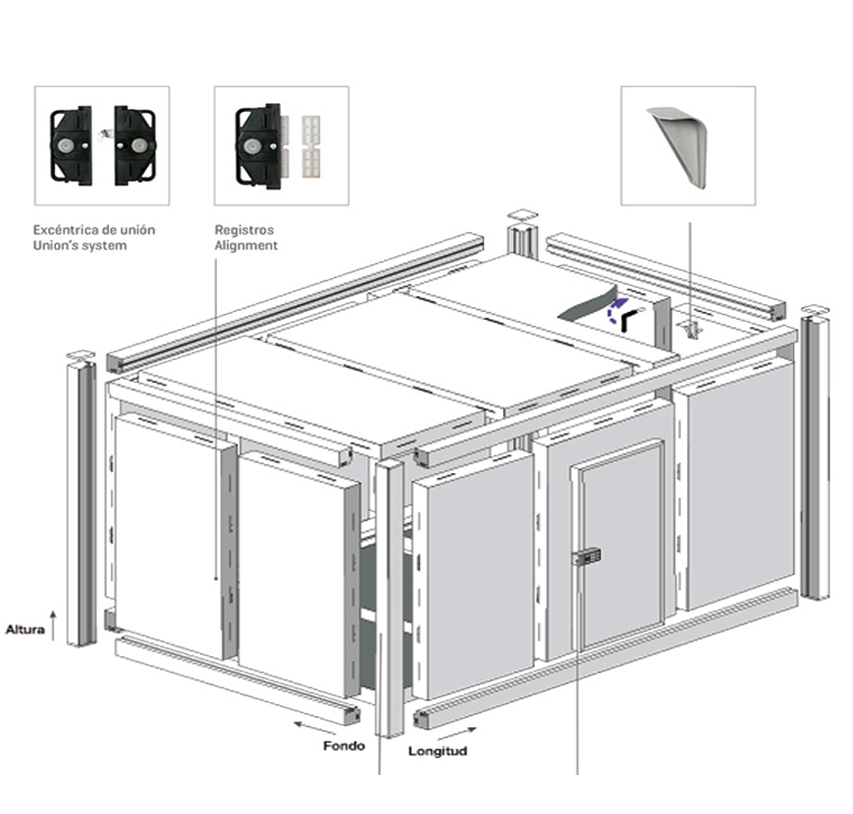
Ceiling and supporting structure
Steel uprights support the walls, ceiling and floor.
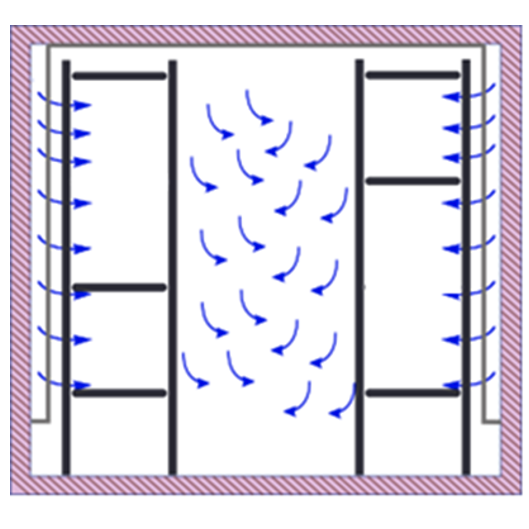
Ventilation intérieure . Vue de face
Interior ventilation
Interior ventilation is carried out by horizontal air circulation: the evaporators and fans are located in the central part of the vertical wall at the bottom of the chamber. They draw in the hot air in the upper part and blow the cool air at the level of the shelves, on the sides of the chamber, through the small holes drilled in the double wall (plenum) in stainless steel.
This technical choice of horizontal air flow makes it possible to achieve great stability and homogeneity of physical parameters at every point in the room and in particular on each shelf.
Regulation is done by modulating the speed of the mixing fans.
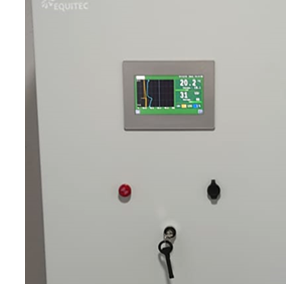
Armoire électrique
Electrical system
The electrical cabinet positioned next to the enclosure access door brings together the electrical power supply and control components:
Touch control screen
Automaton
Individual thermostat for maximum and minimum temperature alarm
General switch
Audible alarm
Electrical devices and protections:
General switch.
General differential switch.
General magnetothermal switch.
Magnetothermal switch for internal sockets.
Magnetothermal and differential switch for lighting circuit.
Magnetothermal switch for humidifier
Power contactors.
Switching contactors.
Temperature regulator.
Push buttons, drivers, keys.
Circuit breakers: general, refrigeration, ventilation, defrost.
Voltage and phase asymmetry monitoring relay.
Interconnection terminals duly referenced.
Emergency button.
Programmer and setpoint change.
Emergency and work lighting
Waterproof lighting fixtures will be installed in the room, providing the correct level of light for working indoors. The luminaires are switched on from inside the chamber using an easily accessible IP65 16A/240V waterproof switch.
Additionally, the room has an emergency alarm system in the event of a power outage.
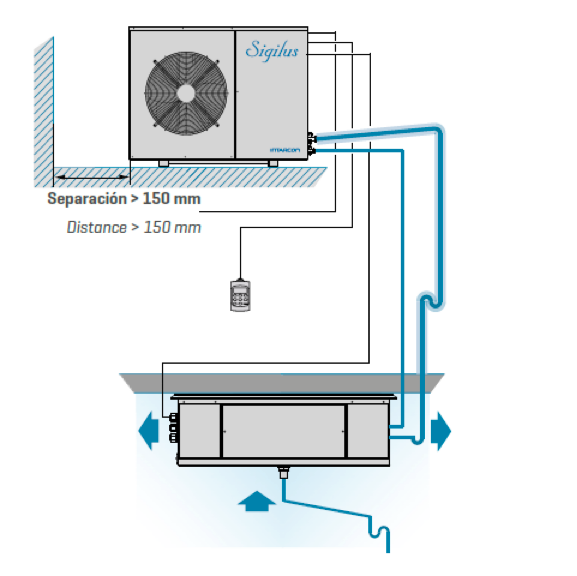
Cooling and heating system
The temperature control system is based on a “split” type forced-air chiller with a compressor mounted next to the chamber and an evaporator positioned externally.
Cold control is controlled by a solenoid valve. Temperature and defrost are regulated by a digital controller.
Compressor:
Power: 5Kw
Refrigerant: R452 without CFC at HCFC
Low noise level: <48dB (silentblocs)
Pressure switch for condensate drain
Cooling condenser with pipes n
Made of copper and aluminum fins which works up to 45°C.
Evaporator:
It is positioned outside at a maximum distance of 12 m (8m horizontally and 4m vertically).
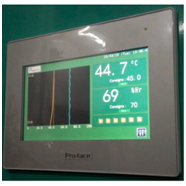
Control automaton, screen, software
The controller is a EUROTHERM SERIES4500. It has a 7” TFT backlit touch screen.
A backup battery, with automatic recharge, can be offered as an option to keep your data for 48 to 72 hours in the event of a power outage. Resolution/accuracy of temperature display: +/- 0.1°C
The controller allows you to control the room remotely (optional) and accepts connections of all types: USB, GSM, Ethernet, dry contacts, etc.
The software is developed by the manufacturer Equitec and contains the know-how for precise regulation of the speaker. It allows the regulation of all the physical parameters that you have requested (temperature, humidity, lighting, watering, etc.).
As well as the simulation of the day-night alternation and the seasons.
All batch data is kept in the automaton for 18 months, and indefinitely on PC via USB or software.
As standard (encrypted version in paragraph 11) it has the following functionalities;
3 levels of password protection (user, supervisor, technical service), with PIN code.
Reprogrammable PIN codes for added security against unauthorized personnel
Freely positionable PAR light sensor
External probe input for recording function
Probe for controlling the evaporator of the Brand: S+S REGELTECHNIK with capacity from -35 to 80ºC and 0 to 100% RH Model: RPFTF-I
Self-diagnosis
Alarm test function to verify buzzer functionality.
Display of current voltage level
Ambient temperature display
Self-diagnostic test for energy consumption
Battery level indication
Display text available in 4 different languages (English, French, Spanish and Italian)
Audible alarms, with continuous warning indications on the screen and a continuous ringtone if the alarm situation persists. Reminder delay programmable via the menu.
Audible and visual alarms (with automatic reset) for high and low temperature/humidity, with user-programmable limits via menu
Door open/door ajar alarm, 30 second delay to allow standard operations.
Programmable alarm delay via menu
Alarm for Power Failures
Probe failures
Low battery
Dirty condenser
Ice buildup in the evaporator
Display of battery charge status.
History of the last 30 alarm situations (non-deletable), verified on screen, with all related information (start time, end time, highest/lowest temperature peaks reached)
Lock code to access the control system.
USB port for downloading stored data Software, upgrade via USB port, compatible with Windows 10 operating system
Dry contact alarm output for BMS alarm control
Night/day function, to minimize energy consumption
Built-in data logger, freely programmable from 5 seconds to 20 minutes (1, 2 3,4,5,6, times per minute) with graphical representation and USB port for data downloads, read every 1”,
Data backup for 18 months.
Export of files recorded in .csv format via RJ-45 Ethernet port. MODBUS TCP/IP for Ethernet LAN connection. External PC connection.
Alarms can be saved to a data file; on the external computer.
Possibility of multimedia tutorials for technical service users

Sensors
Humidity
Capacitive probe (4-20 mA), for temperature control, with a resolution of 0.1ºC.
Brand S+S REGELTECHNIK. Model RPFTF-I.
Measuring range: 0 to 100%RH from -35 to 80ºC.
This electronic capacitive probe is used to measure humidity and record the values. She pilot gives the alarms. But it is not used for regulation.
The temperature and humidity sensors are located at the air inlet to know the difference in values between the outlet and the inlet, in relation to temperature and humidity.
Temperature
Pt 100 probe, type A, for temperature control, with a resolution of 0.1ºC.
Brand S+S REGELTECHNIK Model RPFTF-I
Measuring range :
The temperature sensor is located at the air inlet to know the differential value between the outlet and the inlet, in relation to the temperature.
Measuring probe: Type Pt100
Accuracy: ±0.5ºC (with lights on and off)
Thermal safety: thermostats independent of system control, for sample protection, by maximum temperature and minimum temperature
Audible and visual alarms and cut-off of the cold and/or heat source which causes the alarm
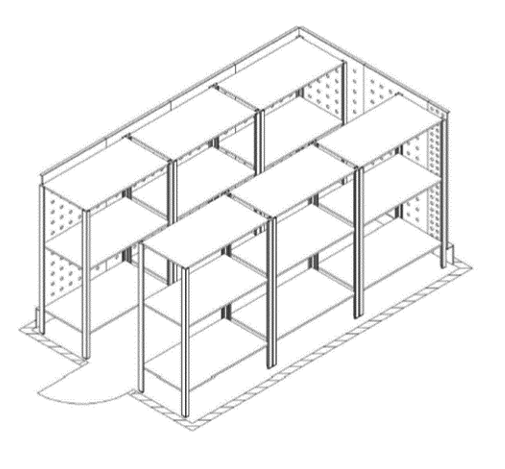
Shelves and shelving. Internal equipment
The room is equipped with 4 shelving modules, two on each side of the central aisle; approximately 1,500 mm wide. x 600 depth x 2000 height (mm), robust, with height adjustment in steps of 100 mm.
Each module has 2 levels of height-adjustable growing containers and 2 levels of light holder containers. The structure of the shelves and tops is in AISI 304 stainless steel.
Each shelf supports the weight appropriate to its functionality, 100 kg/m2.
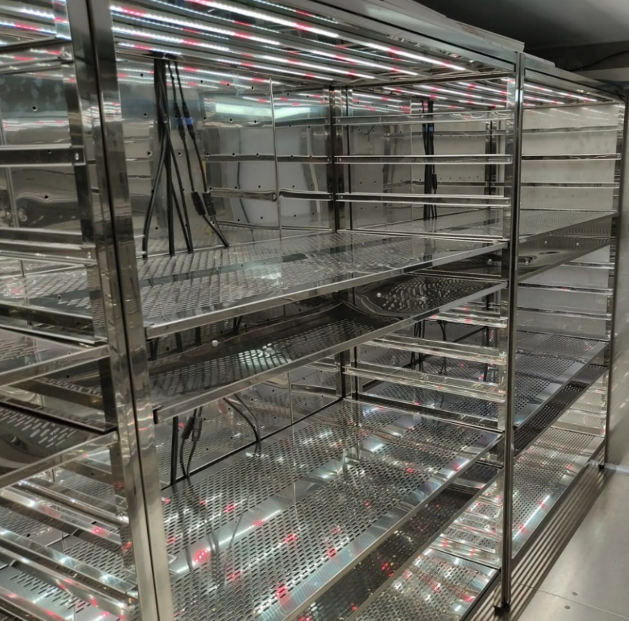
Shelf lighting system
2 levels of shelves with LED lighting. Height adjustable between 10 and 200 cm
200 µmole/m².s at 40 cm, from the 740 nm LED (400 and 700 nm sources)
Light intensity control 20 up to 200 µMol/m² x s PAR, measured 400 mm from the main shelf, with different freely programmable light intensity levels, with separate switch for each tube, with daylight or growth with the same spectrum as sunlight. In the temperature range from +4º to 45ºC.
Free selection from 10 to 100% per channel. Others on request
LED lighting system placed in independent shelves.
The lights can be placed according to the customer's needs and after personalized studies. 4 x 50W LED light tubes per door are built in the photosynthetically active range of 400-760nm
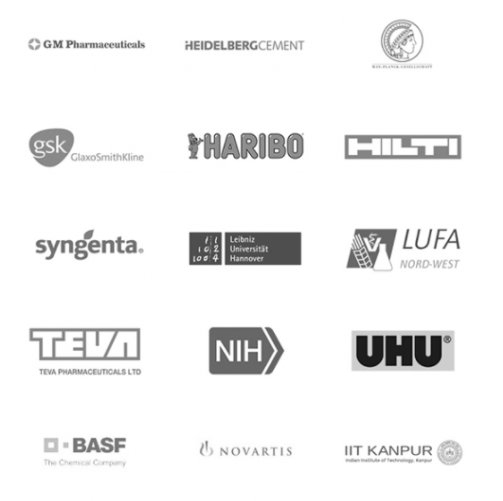
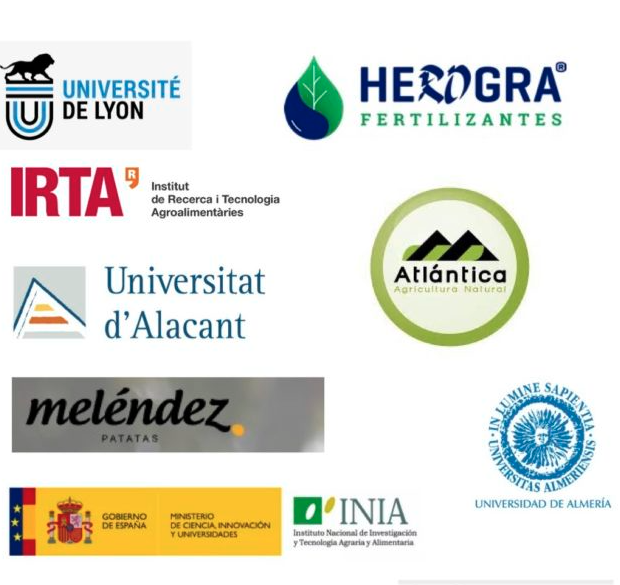
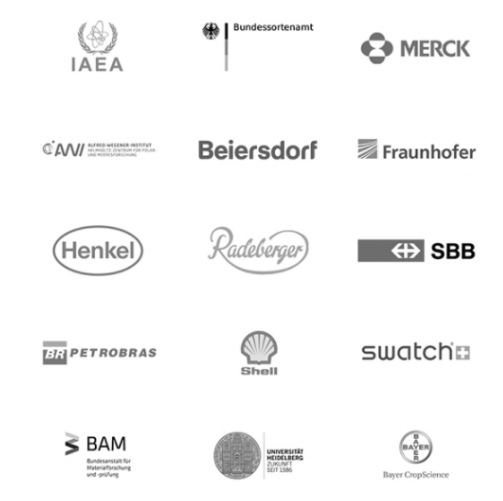
Some useful links on light: in order to fully understand the different measurements.
Light intensity and distance: a simple video to understand the effect of source distance on the illumination received by your samples
The light recipe (according to Philips Lighting): Intensity, Spectrum, Uniformity, Duration are the 4 characteristics to determine for optimal illumination of your samples
PAR,PPF,PPFD,PFD: a video in English to explain the different ways of measuring the radiation useful for photosynthesis which arrives on your samples:
PAR: Photosynthetically Active Radiation. Unit: W/m2. Only Watts generated in the wavelength band between 400 and 700 nm are counted.
PPF: Photosynthetic Photon Flux
PPFD: Photosynthetic Photon Flux Density. Unit: micromoles/m2/s. Only photons between 400 and 700 nanometers are counted
PFD: Photon Flux Density. Unit: micromoles/m2/s. Photons between 300 and 800 nanometers are counted, because it has been found that certain wavelengths in UV and IR promote photosynthesis.
PPFD–Lux conversion. Very useful page. Be careful, the spectrum has a lot of influence on the result obtained
LEDs and plants: in this article the Belgian VEGELED research team demonstrates after 2 years of research that LEDs can also be used in a positive way in horticulture. You will also find a correspondence between the different light sources (LEDs, Neon Tubes, Compact Fluorescent Lamps, HPI (Metal Halide Lamps), HPS (Sodium Lamps). It has been shown that the quantity of photons useful for photosynthesis (mainly in blue and red) is 770% greater per thousand lux with a mixture of monochrome LEDs.
Candela, Lux, Lumen: a page that summarizes this, with additional ideas on the order of magnitude of illuminance
Vertical Farming: Philips is actively working on this growing sector
Why are LEDs more efficient than HPS lamps? The response by Philips in pictures
The Emerson effect: the Emerson effect is the increase in the rate of photosynthesis after exposure of samples to light wavelengths of 670 nm (red light) and 700 nm (infra red).
When exposed to light of both wavelengths simultaneously, the rate of photosynthesis is much greater than the sum of the effects of red light and far-red light.
Valoya-Le Blog: this blog is a mine of information on light. By one of the most advanced LED manufacturers
Light spectra by Valoya: all important parameters and their influence on plant growth
The Technical Illumination Guide by Valoya: a particularly well-done “for dummies” guide to professional lighting.
The plant growth guide by Valoya: with this document you will have a much better understanding of the influence of light on plant growth
Some useful links on plant growth
Germination – Database by species: a wealth of information which brings together in an ABC, the germination conditions of known seeds.
ISTA Germination Tests: An academic dissertation that describes the various ISTA tests for determining seed quality. Test on paper or sand. Growth intensity, accelerated aging, “Hiltner”, “cold test” tests.
ISTA (International Seed Testing Association): Seed Quality Assurance.
ISTA rules 2021: introduction
ISTA rules 2021: certificates
ISTA rules 2021: sampling
ISTA rules 2021: seed health test
Grow lights for plants: a particularly detailed New Zealand blog article on the best lights for different types of plants.
The 9 key questions to ask yourself when choosing the lighting for your samples;
What type of tests?
Do you need to replicate outdoor conditions? (a daylight spectrum is surely suitable)
Or rather promote (accelerate) a process? for example with “plant growth” spectrum with mixture of monochromatic red and blue LEDs.
Or even carry out standardized tests?
Very specialized room, or general?
If your room is allocated to only one type of plants, then we can advise you on the spectrum best suited to your needs.
On the other hand, if you need to test on a wide variety of species, then a “warm white” type spectrum will be preferable.
What type of lamps?
The question almost no longer arises to the extent that neon tubes are increasingly difficult to find as manufacturers replace them with LEDs which allow similar results to be obtained with a considerable expenditure of energy. lesser.
What intensity of lighting?
The intensity is ideally expressed in micromoles/m2/s useful for your plants. Or in Lux at a specified distance from the room. But the expression in PPFD is much more precise: see why further down in the “FAQ and Links” tab).
What spectrum?
The choice of spectrum is absolutely essential to maximize the development of your samples. Below you find several examples of choices of LED strips (and therefore spectrum) recommended by their manufacturers depending on the application
What uniformity?
This is the trick question. Ideally, any scientific approach should be based on the most homogeneous and reproducible tools possible. But having perfect uniformity has a high cost, in terms of investment because we have to add sources, then in use.
Very tight tolerances must therefore be reserved for very precise research.
Photoperiodicity?
Do you need to simulate a day/night alternation (or other)? Seasons? Do a multi-year search?
Should we fear certain pests?
The environment in which your plants will grow may contain pest larvae which can develop under the influence of temperature and light. Will these pests carry disease? Or will they slow down your process?
In this case, using a little UV may be beneficial. To be tested, because too much UV can also hinder the development of your plants.
Taking advantage of the Emerson Effect to boost growth?
The Emerson effect is the increase in the rate of photosynthesis after exposure of samples to light wavelengths of 670 nm (red light) and 700 nm (infra red).
When exposed to light of both wavelengths simultaneously, the rate of photosynthesis is much greater than the sum of the effects of red light and far-red light.
By adding our “laser diodes” it is possible to boost growth by 15 to 20%
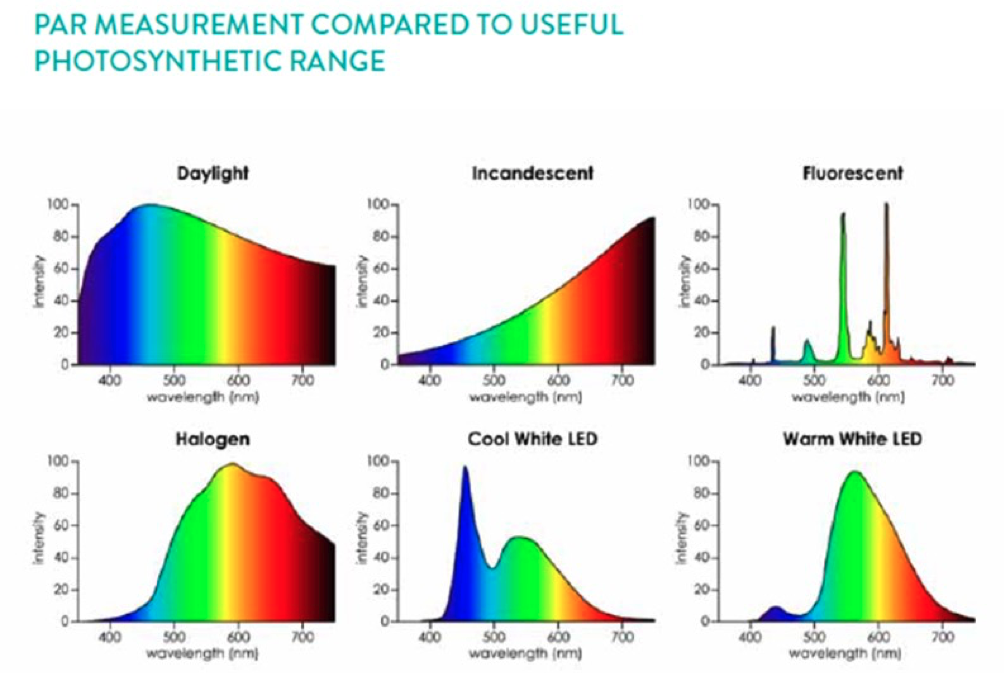
Spectra compared by source type
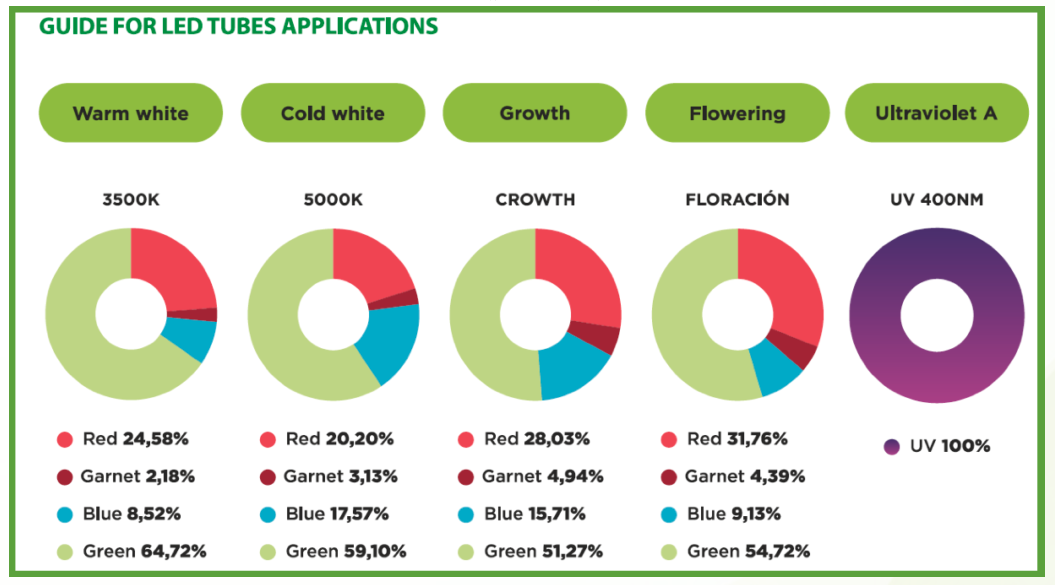
How to choose LEDs according to your application
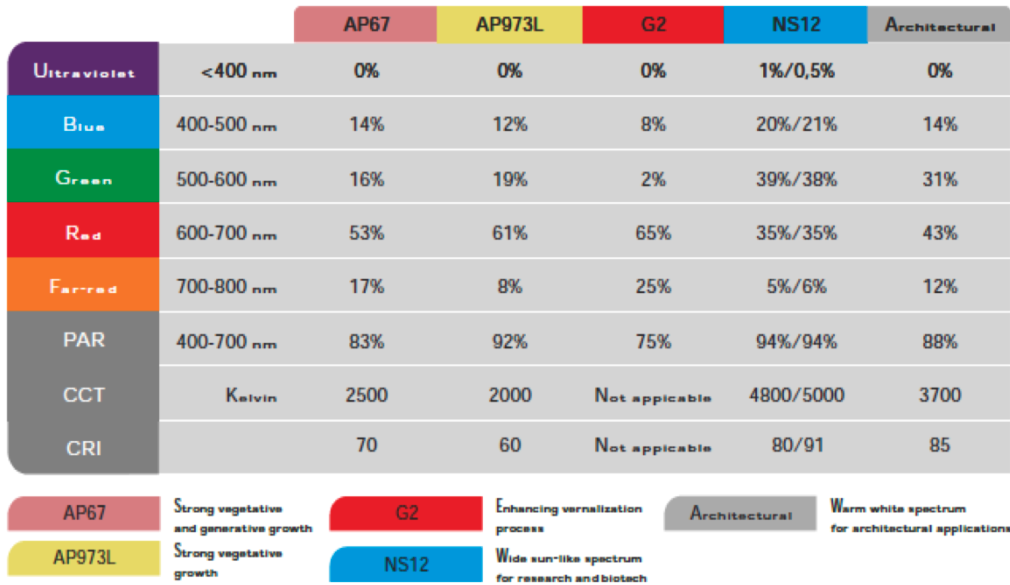
Spectra by LED type
